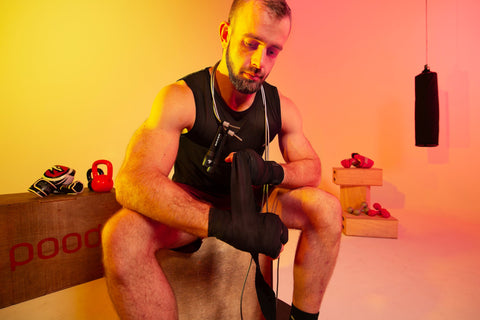How Jumping Rope Impacts Your Aerobic and Anaerobic Systems, Based on Research
Nov 04, 2024Janaína Conceição

Jumping rope is a versatile workout tool, capable of targeting both the aerobic and anaerobic systems depending on how it’s used. Understanding the difference between these two energy systems is essential for tailoring your workouts to meet your specific fitness goals. In this article, we’ll dive into how different types of ropes impact your aerobic and anaerobic systems, with practical workout suggestions for each. This insight comes from unpublished data gathered through research commissioned by the Exercise Physiology lab at Western Kentucky University.
Jumping rope is an effective cardiovascular exercise, and no matter which rope you use, you’ll elevate your heart rate quickly. According to the data from the study, participants consistently hit vigorous intensity ranges using all types of ropes. However, different ropes can help you push your body in distinct ways.
Jumping rope is not just about heart rate, though—it’s also about how your body produces energy.
Learn more about The Effect of Jump Rope on Heart Rate Recovery.
Aerobic exercises rely on oxygen to fuel your muscles over sustained periods of time, which helps to build endurance. When using a speed rope or practicing advanced moves like crosses or double unders, the aerobic system is heavily taxed. This makes speed ropes ideal for improving cardiovascular fitness and increasing your stamina.
Anaerobic exercise relies on stored energy within your muscles and blood, kicking in when oxygen isn’t available fast enough. This is common during high-intensity bursts, like those seen in interval training with beaded or heavy ropes.
While the order of exercises during the study may have impacted the energy systems used, the evidence suggests that all ropes tax both aerobic and anaerobic systems to varying degrees. So, how can you optimize your training using these ropes?
Anaerobic fitness is best trained through high-intensity efforts, followed by rest. Here are some workouts designed to push your anaerobic system using beaded or heavy ropes:
Increase intensity by performing double unders if you can do several in a row, increasing rope speed, or using a heavier rope.
This workout repeatedly taxes the anaerobic system, allowing just enough rest between intervals so that you can put forth max effort every time! If you notice your intensity declining significantly across the workout, increase the rest time a bit.
Pro Tip: Walk around slowly during your rest time to help your legs feel less stiff and heavy.
For those looking to build endurance and focus on aerobic fitness, longer duration and lower intensity jumps are key. Here are some examples of aerobic-focused routines:
These routines are designed to keep you moving at a moderate pace for an extended period, engaging your aerobic system and improving your stamina.
If you're looking to mix it up, try these unique combinations:
These workouts will challenge both the aerobic and anaerobic energy systems, giving you the best of both worlds.
*Note that caloric expenditure will vary based on body size, efficiency, and other factors.Jumping rope is an excellent way to activate both your aerobic and anaerobic systems, with each rope type providing specific advantages. Speed ropes are great tools for enhancing aerobic endurance, while beaded and heavy ropes help you tap into anaerobic energy production very quickly. Choosing the right rope and workout tailored to your goals—whether it’s boosting endurance or building power—is essential for optimizing fitness gains.
Explore our full range of ropes at Elite Jumps and start tailoring your workouts to your needs.
 |
Edited by Kaylee WoodardKaylee Woodard is a jump rope educator and performer with a Master’s degree in Exercise Science and a Ph.D. in Motor Behavior and Sport Psychology. A former competitive jumper, she has won multiple national and world jump rope titles. She now travels the world teaching jump rope with her husband, Nick, through Learnin' the Ropes. |
We're all about equipping and encouraging people to take on big challenges, because we know the process of doing hard things helps us grow in character and capacity.
Frequently bought together
You may also like
0 Comments
There are no comments for this article. Be the first one to leave a message!